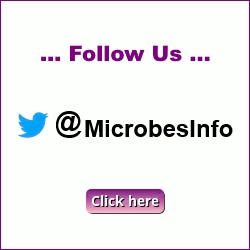Operating four unique collections consisting of expertly preserved, authenticated cell lines and microbial strains of known provenance for use in medical science and laboratory healthcare.
Also See:
Links for Culture Collections:
-
http://www.phe-culturecollections.org.uk/
-
Maintaining strains of marine phytoplankton, bacteria and viruses.
http://roscoff-culture-collection.org/ -
The Salmonella Genetic Stock Centre (SGSC) maintains genetic stocks of Salmonella, as well as some strains of related bacterial genera.
http://people.ucalgary.ca/~kesander/ -
A collection of Bacteria and Fungi.
http://www.uv.es/uvweb/spanish-type-culture-collection/en/spanish-type-culture-collection-1285872233521.html -
Consolidating the management of Thailand's microbial resources.
http://www1a.biotec.or.th/TNCC/index.asp -
Maintaining and distributing genetically characterized strains, cloning vectors, and bacteriophage for the genus Bacillus and related organisms.
http://www.bgsc.org/ -
Maintaining living specimens of marine phytoplankton, freshwater microalgae and fungal isolates for research, teaching and commercial use.
http://cccm.botany.ubc.ca/ -
The CCAC maintains approximately 5000 strains from around the world. Most of the strains in the CCAC derive from freshwater/terrestrial habitats (85%), the remaining 15% represent marine or brackish water strains. 15% of the strains are axenic.
http://www.ccac.uni-koeln.de/ -
A central repository to receive, catalog, preserve, and distribute high-quality and reliable wild type and mutant cultures of the green alga Chlamydomonas reinhardtii, as well as useful molecular reagents and kits for education and research.
https://www.chlamycollection.org/ -
CIP is rich in about 20,000 bacterial strains belonging to 4,200 different species.
https://www.pasteur.fr/en/public-health/crbip/collections/collection-institut-pasteur-cip -
The CCCryo is specialised on cryophilic freshwater and permafrost microalgae from polar and alpine environments, the so-called snow algae.
http://cccryo.fraunhofer.de/web/infos/welcome/ -
Kobe University, Kobe, Japan.
http://ku-macc.nbrp.jp/ -
The MBA Collection consists of some 400 strains from 80 genera of marine phytoplankton.
https://www.mba.ac.uk/facilities/culture-collection -
The MTCC has five sections, the Actinomycetes, Bacteria, Fungi, Yeasts and Plasmids.
http://mtcc.imtech.res.in/ -
The CCMM collections compile approximately 3000 microorganisms including bacteria, yeasts, fungi and algae.
http://www.ccmm.ma/ -
Virus taxonomy by the International Committee on Taxonomy of Viruses (ICTV).
https://talk.ictvonline.org/taxonomy/ -
A repository of biomedically and environmentally important fungi and bacteria, including emerging pathogens, opportunists, allergenic and toxigenic species.
https://www.uamh.ca/ -
UKNCC co-ordinates the activities, marketing and research of the UK national service collections of microbial organisms. The organisms that are supplied include actinomycetes, algae, animal cells, bacteria, cyanobacteria, filamentous fungi, nematodes, protozoa, mycoplasm, viruses and yeasts.
http://www.ukncc.co.uk/ -
Bringing together scientists working with laboratory based collections of microbes.
http://www.usccn.org/ -
The Culture Collection includes different strains of living algae, representing most major algal taxa.
http://www.utex.org/ -
The collections host bacteria, fungi, and plant cell cultures.
http://culturecollection.vtt.fi/ -
WFCC-MIRCEN World Data Centre for Microorganisms (WDCM) provides a comprehensive directory of culture collections, databases on microbes and cell lines, and the gateway to biodiversity, molecular biology and genome projects.
http://www.wdcm.org/ -
The WFCC is concerned with the collection, authentication, maintenance and distribution of cultures of microorganisms and cultured cells.
http://www.wfcc.info/


